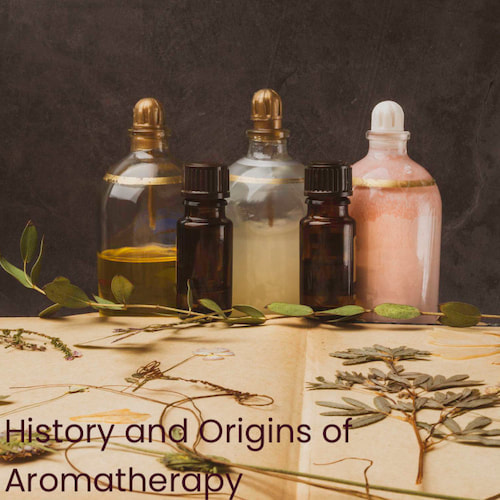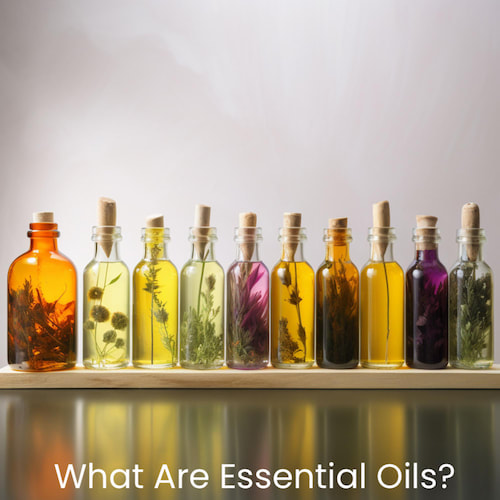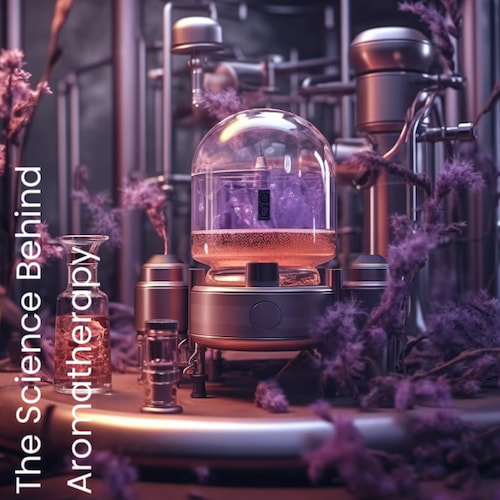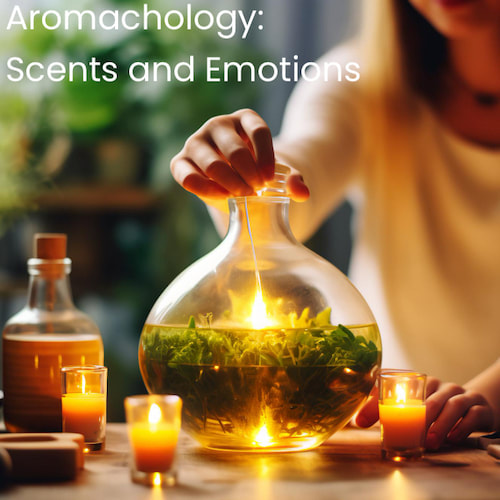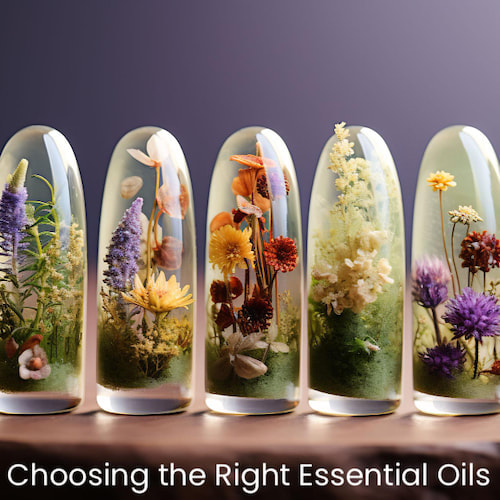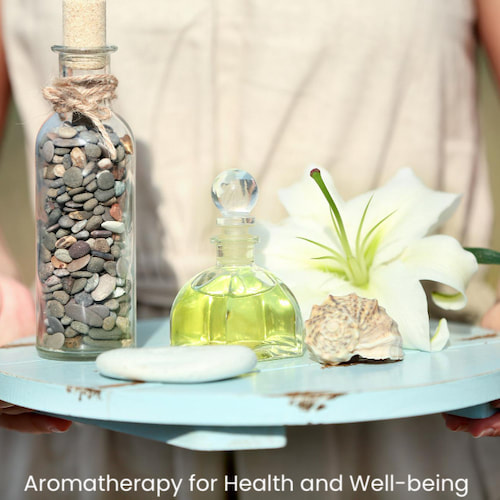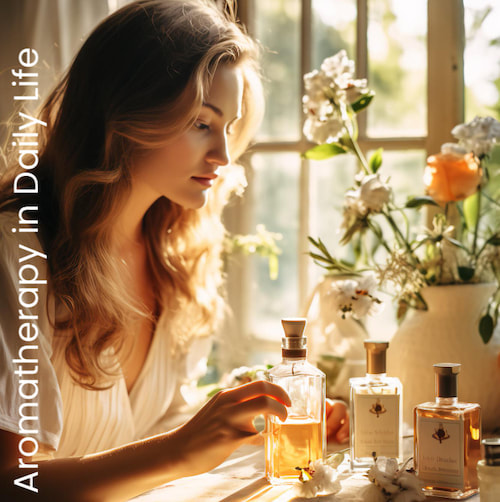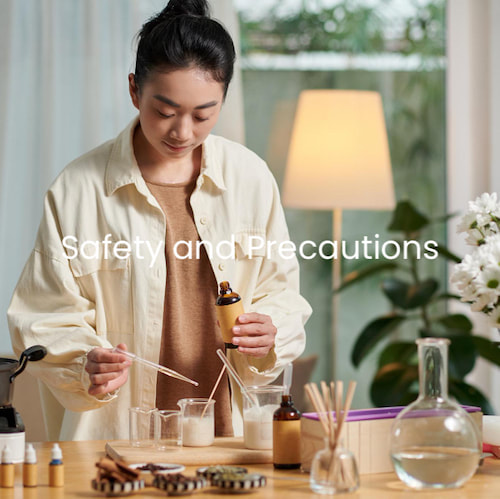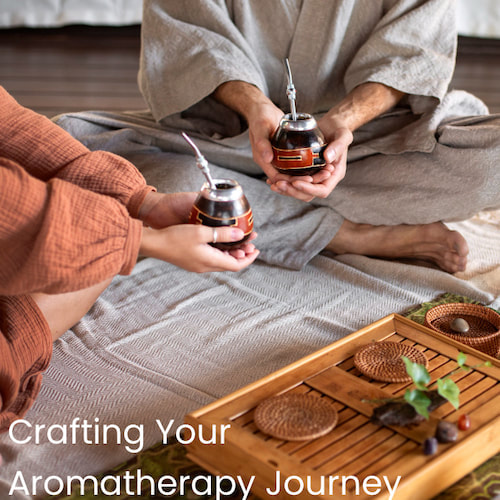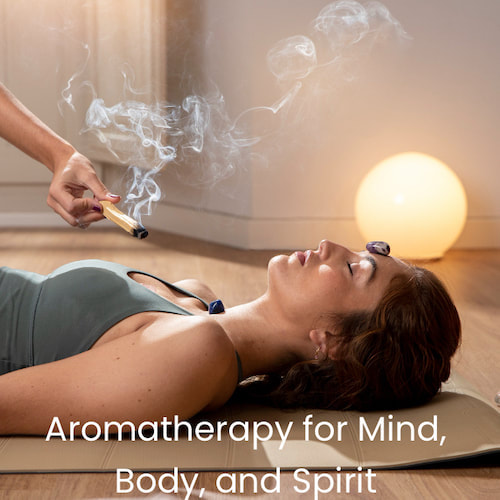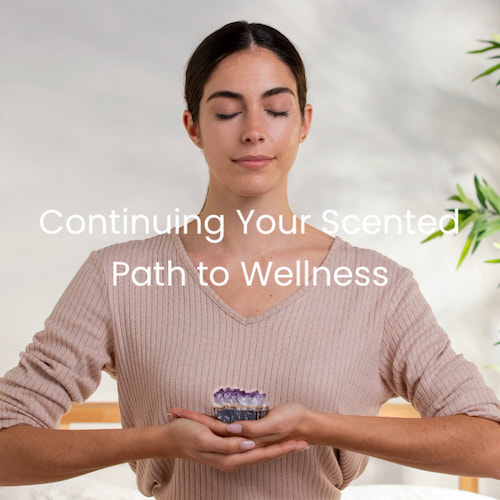History and origins to Aromatherapy
Unveiling the World of Aromatherapy
Aromatherapy, a holistic healing practice rooted in harnessing plant essences, provides a fragrant path to well-being and relaxation. Essential oils, derived from various plant parts, offer diverse therapeutic properties. Lavender calms, tea tree heals, and citrus oils refresh. Aromatherapy operates on physical and emotional levels, reducing stress and enhancing mood. It's integrated into modern healthcare, easing pain and anxiety in hospitals and clinics, even in palliative care. Mindful use, understanding each oil's properties, dilution, and high-quality sourcing, ensures safe application. Aromatherapy is a testament to the synergy between humans and nature, offering tranquility and rejuvenation amidst life's chaos.
The History and Origins of Aromatherapy
Aromatherapy, rooted in ancient civilizations, finds its origins in the use of aromatic plants for healing purposes. Ancient Egyptians employed fragrant oils in religious rituals and cosmetics, while Chinese and Indian traditions integrated aromatic herbs in their healing practices. Greek and Roman scholars like Hippocrates and Galen explored the therapeutic benefits of aromas. The Middle Ages saw advancements in distillation methods, and by the Renaissance, the use of aromatics in Europe expanded. Modern aromatherapy emerged in the 20th century, pioneered by figures like Gattefossé and Maury. Today, aromatherapy is a well-established complementary therapy, integrated into various healthcare practices, offering holistic well-being rooted in ancient aromatic wisdom.
What are essential oil
Exploring the Essence: What Are Essential Oils
Essential oils, extracted from various plant parts, are revered for their therapeutic and aromatic properties. They undergo meticulous extraction methods like steam distillation, cold-pressing, and CO2 extraction, each preserving unique aromatic components. These oils are complex mixtures of organic compounds, such as terpenes and phenols, giving rise to specific scents and therapeutic effects. Aromatherapy utilizes their aromatic compounds to impact emotions and promote relaxation. In skincare, oils like lavender and tea tree offer antibacterial benefits, while some, like peppermint, enhance culinary delights. Responsible use is crucial due to their potency, requiring dilution and careful ingestion. Essential oils epitomize nature's healing, enhancing well-being when used knowledgeably and responsibly.
How Essential Oils are Extracted and Produced
Essential oils, concentrated plant extracts, are obtained through various methods like steam distillation, cold-press extraction, solvent extraction, CO2 extraction, enfleurage, hydrodistillation, expression, and fractional distillation. Each method preserves specific aromatic components, making them suitable for different plant materials. Quality control, using techniques like gas chromatography and mass spectrometry, ensures purity. Storage in dark glass bottles, protecting oils from light and air, maintains their potency. These oils serve as natural remedies and fragrances in aromatherapy and skincare, highlighting the intricate process behind their therapeutic properties and emphasizing their significance in holistic well-being.
The Science Behind Aromatherapy
Aromachology: Understanding the Connection Between Scents and Emotions
Aromachology, the study of scents' impact on human emotions and behavior, involves psychology, chemistry, and neurobiology. Our sense of smell connects directly to the brain's emotion and memory centers, influencing mood and actions. Certain scents, like lavender for relaxation or citrus for energy, can trigger emotional responses. Aromatherapy employs these principles, using essential oils to improve well-being. Businesses apply aromachology to affect consumer behavior through strategically placed scents. Ongoing research explores scent's potential in mental health, workplaces, and virtual reality, offering a promising future where scents enrich our emotional and behavioral experiences.
The Chemistry of Essential Oils: Compounds and Benefits
Essential oils, extracted from plants, have a diverse chemical composition including terpenes, phenols, and aldehydes, each contributing to their unique aroma and therapeutic effects. They are widely used in aromatherapy, skincare, and alternative medicine due to their relaxing and healing properties. Different oils offer various benefits such as pain relief, antimicrobial properties, skincare, respiratory support, digestive aid, and sleep enhancement. Essential oils positively impact emotional well-being, reducing anxiety and improving mental clarity. As our understanding of these compounds deepens, their responsible use ensures safety while offering natural ways to enhance both physical and emotional health.
Aromachology – scents and emotions
Aromachology, or the psychology of scent, explores the profound relationship between scents and human emotions. The olfactory system, intricately linked to the limbic system governing emotions and memory, triggers neurological responses when exposed to specific aromas. For instance, the scent of freshly baked cookies can evoke childhood warmth, while lavender induces relaxation. This connection allows intentional use of scents to create desired emotional states. Scientific studies demonstrate scents' impact on mood and behavior, influencing happiness and reducing stress. Aromatherapy utilizes essential oils to induce emotional responses, enhancing well-being. Scents also trigger powerful memories, employed in marketing and product design. Cultural and personal factors further shape individual scent perceptions, emphasizing the subjective nature of aromachology. Researchers delve deeper into this field, unlocking innovative applications in healthcare and hospitality, showcasing the therapeutic potential of scents in enriching human experiences.
Choosing the Right Essential Oil
A Guide to Popular Essential Oils and Their Unique Properties
Essential oils, derived from plants, hold unique properties beneficial for well-being. Lavender oil promotes relaxation and soothes skin irritations. Peppermint oil invigorates, relieves headaches, aids digestion, and eases muscle pain. Lemon oil purifies air, enhances focus, and boosts the immune system. Tea tree oil treats skin issues and aids respiratory problems. Eucalyptus oil clears congestion and aids colds. Chamomile oil calms anxiety and suits sensitive skin. Bergamot oil reduces stress, and Frankincense uplifts spiritually. Ylang-ylang enhances mood, and Rosemary boosts mental clarity. Sandalwood aids meditation, and Cedarwood promotes relaxation. Proper dilution and patch tests are crucial when using essential oils, offering holistic enhancements to life.
Combining Essential Oils for Synergistic Effects
Combining essential oils in aromatherapy creates synergistic effects, enhancing their therapeutic benefits. Various oils, categorized based on properties like relaxation or energy, can be blended for specific needs. For relaxation, lavender, chamomile, and ylang-ylang create a calming atmosphere. An energizing blend comprises citrus oils like lemon and peppermint. Focus and concentration benefit from rosemary, lemon, and basil. Immune support combines tea tree, eucalyptus, and lavender. For sleep aid, lavender, cedarwood, and bergamot induce relaxation. Stress relief blends bergamot, frankincense, and vetiver. Blenders should start small, experiment, maintain balance, consider individual sensitivities, and store blends properly. This approach allows tailored aromatherapy experiences, promoting overall well-being and balance.
Aromatherapy Methods and Technique
Inhalation: The Power of Aroma in the Air
Aromatherapy utilizes aromatic essential oils for well-being, primarily through inhalation, a direct and potent method. When inhaled, these oils' molecules stimulate the olfactory system, triggering neurological and physiological responses. Lavender induces calm, while peppermint enhances mental clarity. Eucalyptus aids respiratory health, clearing congestion, and tea tree purifies the air. Certain oils, like chamomile and sandalwood, promote sleep quality, and bergamot and ylang-ylang aid stress relief. Inhalation occurs via diffusers (ultrasonic, nebulizing, or heat-based) and personal inhalers. Safety is crucial, especially for those with respiratory conditions. Inhalation offers a versatile approach, fostering tranquility and balance, enhancing overall well-being.
Topical Application: Nurturing Your Skin and Senses
Aromatherapy, utilizing aromatic essential oils, enriches well-being through topical application, offering a direct and nurturing experience for the skin and senses. Derived from plants, these oils rejuvenate the skin, ease discomfort, and enhance emotional health. Diluted with carrier oils, such as coconut or jojoba, they are absorbed into the bloodstream, influencing various concerns. Lavender soothes, tea tree treats acne, and rosehip supports skin regeneration. These oils, in personalized blends, nurture the skin and provide sensory delight. Peppermint relieves headaches, and bergamot uplifts mood. Safety is paramount; oils must be diluted and patch-tested due to high concentration. The sensory ritual of applying oils nurtures the soul, offering relaxation and solace, transforming daily rituals into acts of self-love and healing.
Aromatherapy Diffusers: Elevating Your Space with Scents
Aromatherapy diffusers are enchanting gateways to a world of essential oil fragrances, transforming spaces into serene sanctuaries. These devices disperse aromatic molecules, promoting relaxation, focus, and well-being. They come in various forms, including ultrasonic, nebulizing, and heat-based diffusers, each offering unique benefits. Diffusers enhance ambiance by tailoring scents to specific needs, from calming lavender for bedrooms to invigorating citrus for workspaces. They also offer health benefits, purifying the air and boosting immunity. Certain oils like peppermint enhance mental clarity, aiding concentration. Customizable blends address specific concerns, fostering a spa-like experience at home. Embracing aromatherapy diffusers represents a lifestyle choice, infusing spaces with therapeutic scents, fostering balance, and nurturing contentment and vitality.
Aromatherapy for Health and Well-being
Stress Relief and Relaxation: Aromatherapy for Mindfulness
In today's hectic world, stress has become a constant companion, affecting mental and physical well-being. Aromatherapy, utilizing essential oils, emerges as a natural stress-relief solution, enhancing mindfulness and emotional balance. Aromatherapy operates on the principle that scents influence emotions and memories, impacting the limbic system. Calming essential oils like lavender, chamomile, and bergamot reduce anxiety and induce tranquility. Aromatherapy can be practiced through diffusion, topical application, baths, and massages, creating a profound calming effect. Incorporating aromatherapy into mindfulness practices enhances meditation and yoga, fostering mental focus and relaxation. Diffusers in various spaces create serene environments, aiding stress management. Aromatherapy is a holistic approach empowering individuals to lead harmonious lives amid life's challenges.
Aches and Pains: Easing Discomfort Naturally
Aches and pains, whether from physical strain, chronic conditions, or stress, are common issues. Aromatherapy, utilizing essential oils from plants and herbs, provides a gentle and effective way to alleviate discomfort without the side effects of pharmaceutical drugs. Essential oils possess analgesic, anti-inflammatory, and muscle relaxant properties, making them valuable for pain relief. Peppermint, lavender, and eucalyptus oils are notable choices for specific ailments. Methods include topical application, bathing, hot/cold compresses, and inhalation. Aromatherapy not only addresses physical pain but also considers the mind-body connection, promoting relaxation and overall well-being. Precautions and professional guidance are essential for safe and effective use.
Aromatherapy for Sleep: Creating a Restful Environment
Aromatherapy offers a natural solution to improve sleep quality in our fast-paced world. Harnessing essential oils like lavender and chamomile, known for their sedative properties, aromatherapy induces relaxation and reduces stress. Creating a bedtime ritual with essential oil diffusers signals the body to unwind, enhancing the overall sleep experience. Different oils cater to specific needs; lavender calms, chamomile soothes restlessness, and bergamot uplifts while calming. Various methods, including scented candles, sachets, and linen sprays, infuse the bedroom with calming aromas. Custom blends, massages, and safety precautions, considering individual sensitivities, further enhance the effectiveness of aromatherapy, guiding individuals toward peaceful, rejuvenating sleep.
Aromatherapy in Daily Life
Aromatherapy, rooted in ancient traditions, has gained popularity as a holistic approach to well-being. Using essential oils like lavender and chamomile, it effectively reduces stress and anxiety, creating a soothing environment. Citrus oils like lemon uplift moods, combating emotional lows. Aromatherapy aids sleep quality, with oils such as lavender promoting relaxation. Beyond mental benefits, it contributes to physical health; tea tree oil disinfects, while peppermint relieves headaches, and eucalyptus aids respiratory issues. Widely used in spas and healthcare, aromatherapy complements traditional treatments. Its diverse applications make it integral to daily life, offering balance and harmony in an increasingly hectic world.
Aromatic Self-Care: Incorporating Aromatherapy into Your Routine
In the whirlwind of modern life, self-care often takes a back seat, but aromatherapy offers a fragrant route to holistic well-being. Derived from plants, essential oils promote physical, emotional, and mental health. Integrating aromatherapy into daily rituals transforms self-care into a sensory experience. Morning energizers like bergamot or peppermint awaken the senses, setting a positive tone. Midday stress relief involves calming scents like lavender, enhancing focus and productivity. Evening wind-downs with oils like lavender promote relaxation and better sleep. Weekend retreats with oils like frankincense aid spiritual practices. DIY treatments, such as natural perfumes and facial mists, offer therapeutic benefits. Aromatherapy becomes a luxurious sanctuary, a reminder of self-love amid life's chaos.
Aromatherapy for Travel: Staying Balanced on the Go
Aromatherapy becomes an indispensable travel companion, providing natural solutions for various challenges. Portable tools like inhalers and roll-on bottles allow the calming scents of essential oils, such as lavender and chamomile, to provide instant relaxation during stressful situations. Essential oils like peppermint and lemon combat jet lag, offering revitalization and mental clarity. Oils like bergamot and ylang-ylang alleviate travel anxiety, promoting relaxation. Tea tree, eucalyptus, and lemon oils offer immune support, defending against germs. Ginger and peppermint oils relieve motion sickness, while lavender, chamomile, and cedarwood create a peaceful sleep environment. Citrus oils boost energy, combating travel fatigue. Incorporating aromatherapy into travel ensures a balanced and well-being-focused journey, enhancing the overall travel experience.
Aromatic Home Cleaning: A Fresh Approach to Household Chores
Aromatherapy proves invaluable for travelers seeking balance and well-being. Portable essential oil diffusers offer familiar scents, turning any space into a calming haven. Stressors like flight delays yield to calming oils such as lavender and chamomile, easing anxiety and promoting clarity. For jet lag, invigorating scents like peppermint help stay alert, while calming fragrances like lavender induce restful sleep. Aromatherapy aids the immune system with antimicrobial oils such as tea tree and lemon, reducing the risk of illness. Emotional support is found in mood-enhancing citrus oils like orange and lemon, fostering a positive atmosphere. Aromatherapy ensures travel is not only enriching but also rejuvenating for body and soul.
Safety and Precautions
Dilution Guidelines: Protecting Your Skin
Using essential oils safely involves understanding and following crucial dilution guidelines to prevent skin irritation or adverse reactions. Essential oils are concentrated plant extracts, necessitating proper dilution with carrier oils like coconut or jojoba oil. Dilution ratios, typically 1-2% for adults and lower for children, depend on the specific oil and purpose. Conducting patch tests on a small skin area helps identify adverse reactions before broader use. Some oils, like cinnamon and oregano, require higher dilution due to their potency. Pregnant individuals and those with health conditions should seek professional advice. Dilution not only safeguards skin but also enhances the therapeutic benefits of essential oils, ensuring a safe and enriching aromatherapy experience.
Safe Usage Around Pets and Children
To safely enjoy essential oils in households with pets and children, mindful usage is paramount. Certain oils can be toxic to pets, particularly cats, causing adverse reactions. Direct application on pets should be avoided, and diffusing must be done in well-ventilated areas. Consulting a veterinarian for pet-specific advice is crucial. For children, age-appropriate oils like lavender are safe, but proper dilution (0.25-0.5% for infants, 1-2% for older kids) is vital. Inhalation can be beneficial if the room is ventilated, and oils must be stored securely, preferably in locked cabinets. Responsible usage enhances well-being, safeguarding both humans and their beloved pets and children.
Allergies and Sensitivities: Understanding and Avoiding Reactions
Using essential oils and aromatic products involves understanding allergies and sensitivities. Allergies and sensitivities can manifest as skin rashes, congestion, headaches, or respiratory issues. Conducting patch tests before using a new oil is essential, especially for those with histories of allergies. Some oils, like tree nut-derived ones, can trigger specific allergies. Proper dilution with carrier oils minimizes skin reactions. Consulting healthcare professionals is advisable for those with severe allergies. Inhalation methods, while popular, should be approached cautiously by individuals with respiratory conditions. Responsible usage ensures safe aromatherapy experiences, allowing individuals to benefit from essential oils without adverse reactions.
Crafting Your Aromatherapy Journey
Creating Personalized Blends: Tailoring Scents to Your Needs
Creating personalized essential oil blends is an artful process that enables tailored aromatherapy experiences. Understanding essential oil properties is crucial; for instance, lavender induces calmness, while citrus oils offer energy. Identifying your needs guides oil selection, whether for relaxation, focus, or sleep. Balancing notes (top, middle, base) creates a harmonious aroma. Experimentation with ratios is key; start simple and adjust based on preference. Safety precautions, especially for potent oils, allergies, and pregnancy, are vital. Various techniques, from glass bottles to diffusers, allow convenient blending. Crafting unique blends enhances well-being, transforming aromatherapy into a deeply personal, fragrant sanctuary for the body, mind, and soul.
The Art of Aromatherapy: Exploring Aromachitectural Design
Aromachitectural design, an innovative concept merging aromatherapy principles with architecture, revolutionizes spaces by engaging olfactory senses. Beyond visual aesthetics, carefully chosen scents shape specific atmospheres, like calming lavender in spas and invigorating citrus in gyms. Integrating essential oils such as eucalyptus and tea tree in healthcare facilities enhances hygiene, while blends like rosemary and peppermint in offices boost focus. Scents aid spatial navigation and evoke emotional responses; for instance, hotels use vanilla for a comforting atmosphere. Reflecting cultural significance, aromachitectural design immerses visitors in historical experiences. This holistic approach acknowledges scents' impact on emotions, creating harmonious, enriching, and emotionally resonant environments, transforming buildings into sensory experiences.
Aromatherapy for Mind, Body, and Spirit
Aromatherapy and Emotional Balance
Aromatherapy, employing essential oils, emerges as a potent method for emotional well-being. Addressing stress and anxiety, oils like lavender and chamomile soothe when diffused or applied, fostering relaxation. Citrus oils like lemon and orange uplift moods, combating sadness, and depression. Confidence is boosted by oils such as frankincense and jasmine, enhancing inner strength. Quality sleep, vital for emotional balance, is promoted by scents like lavender, improving sleep quality. Aromatherapy integrates into mindfulness practices, aiding emotional release. Personal preferences and sensitivities are crucial; individuals find solace in different scents. Aromatherapy becomes a fragrant sanctuary, gracefully navigating complex emotions, fostering resilience and balance.
Spiritual Exploration: Aromatherapy in Meditation and Rituals
Aromatherapy intertwines with spirituality, enhancing meditation, mindfulness, and rituals in diverse traditions. Essential oils like frankincense and myrrh ground meditative states, fostering inner peace. Corresponding oils align chakras, promoting emotional balance and connection. Aromas like sage purify spaces in ceremonies, while oils like cinnamon attract blessings. Aromatherapy aids intention setting; scents like lavender enhance tranquility. Connecting individuals with nature, aromatherapy fosters unity and gratitude. Through selected oils, it deepens meditative practices, aligns energies, facilitates rituals, and strengthens connections. Aromatherapy becomes a sacred bridge, guiding spiritual exploration, promoting peace, purpose, and transcendence in individuals' lives.
A Scented Path to Wellness
Reflecting on Your Aromatherapy Experience
Engaging in aromatherapy offers a transformative, mindful, and deeply personal experience. Inhaling fragrances like calming lavender or invigorating citrus grounds you in the present, providing sanctuary from life's chaos. Exploring scents leads to self-discovery, revealing emotional connections and preferences. Aromatherapy becomes a safe space for emotional release, aiding in processing buried feelings. Transforming self-care routines, it infuses moments with indulgence and tranquility, nurturing self-love. Aromatherapy strengthens connections, fostering community and understanding through shared experiences. Reflecting on this sensory journey cultivates gratitude for your senses, celebrating the beauty of life. Aromatherapy becomes a profound exploration, inviting continued curiosity and gratitude.
Continuing Your Aromatherapy Journey
Continuing your aromatherapy journey offers a fulfilling path to enhanced well-being. Deepen your knowledge by exploring essential oils' properties and applications through books and courses. Create personalized blends for relaxation, focus, and emotional support, keeping a journal to refine your skills. Experiment with various application methods, such as massage and bath soaks. Learn safety precautions, understanding dilution ratios and contraindications. Share your knowledge with others through workshops or gatherings. Incorporate aromatherapy into daily life, infusing your surroundings and routines with pleasant scents. Explore specific-purpose blends, targeting areas like stress relief or sleep enhancement. Engage with the aromatherapy community online, and stay open to continuous exploration and discovery in this vast and enriching field. Aromatherapy becomes not just a practice but a way of life, offering enhanced well-being, mindfulness, and self-discovery.
